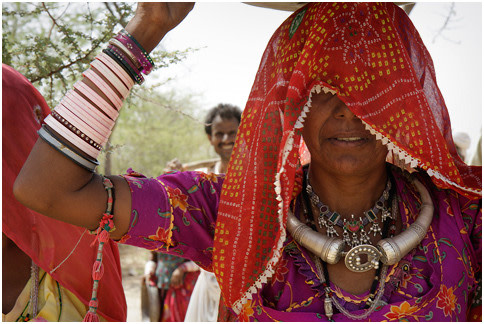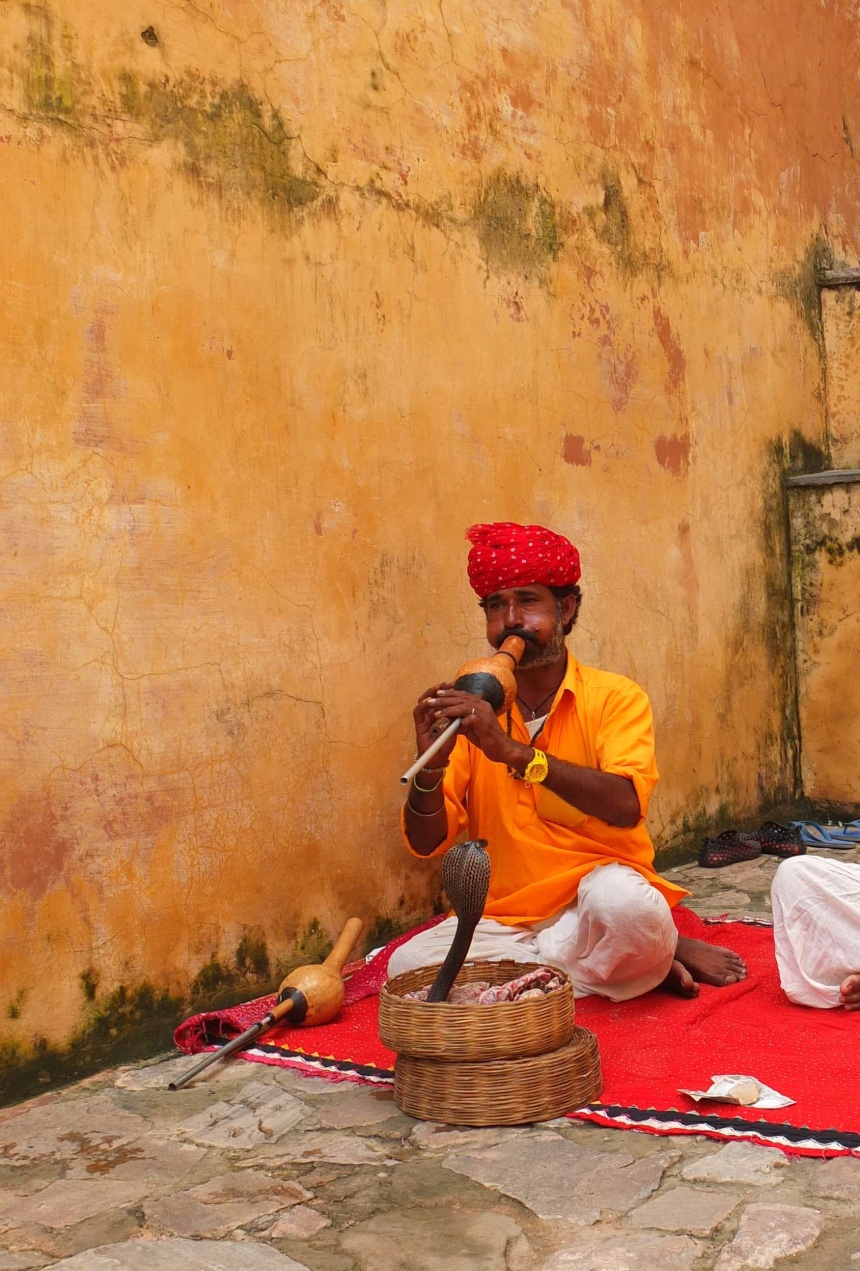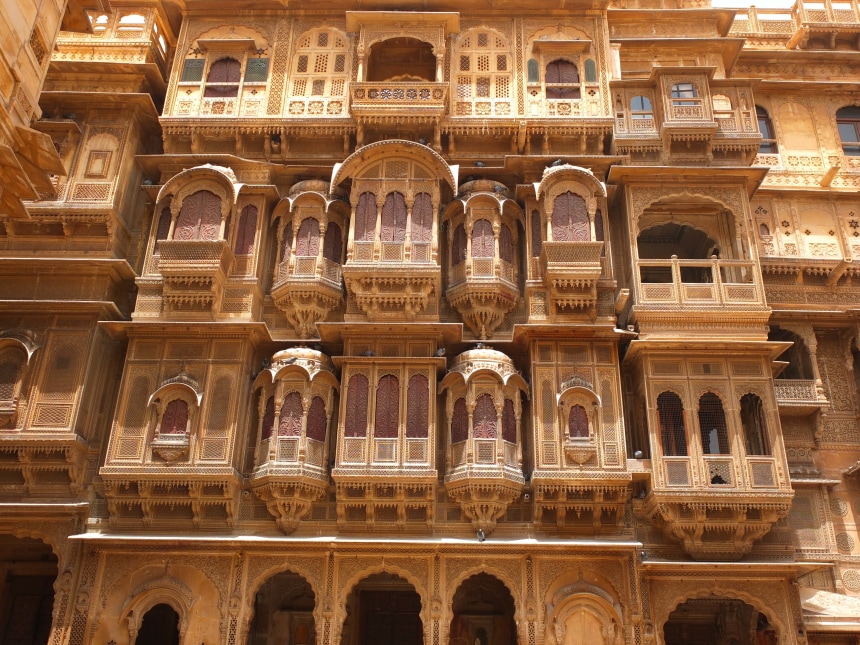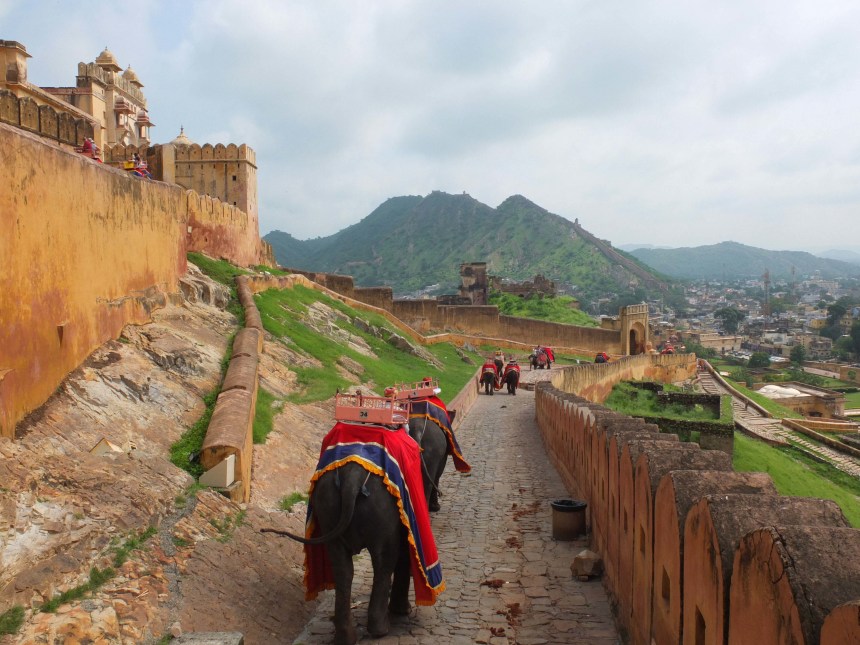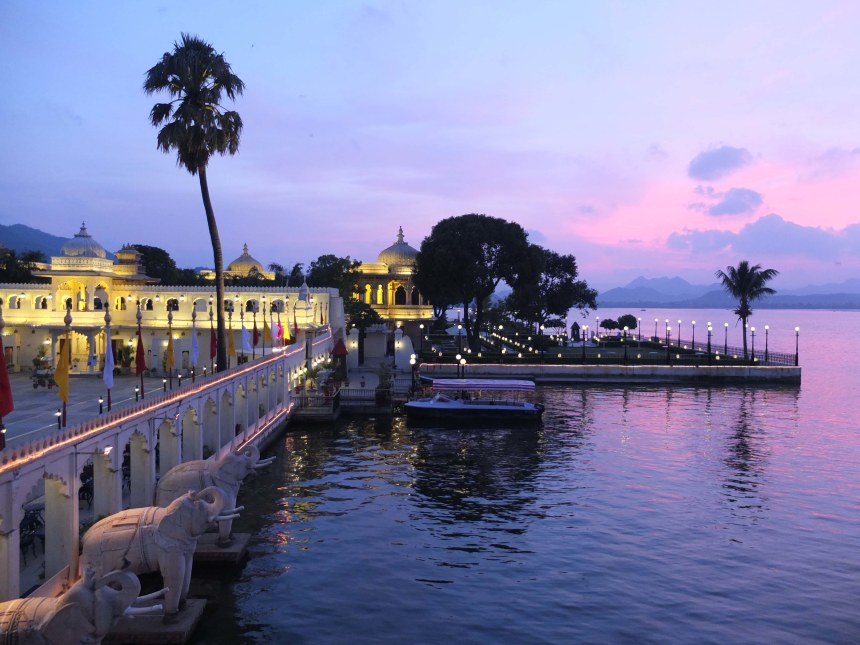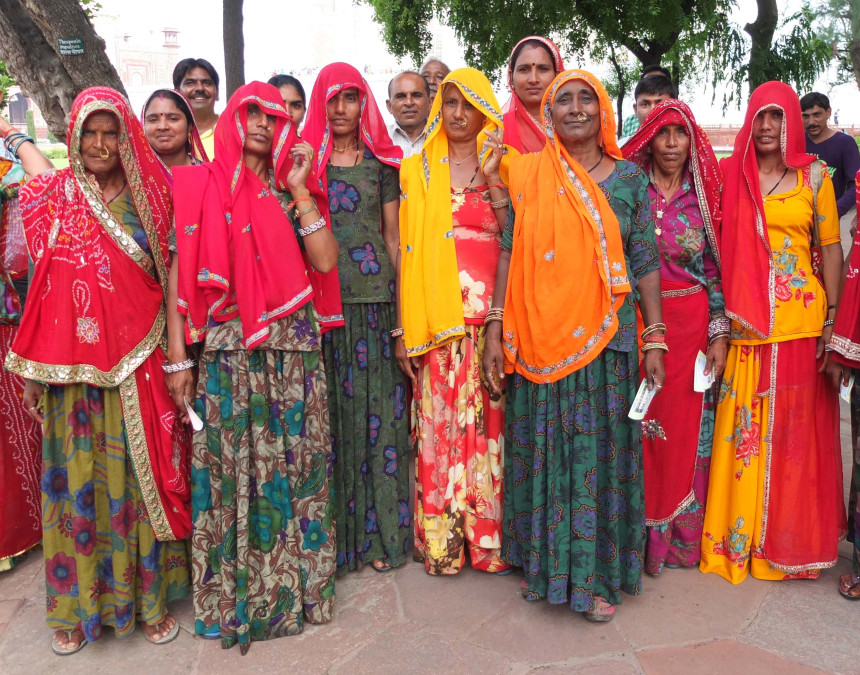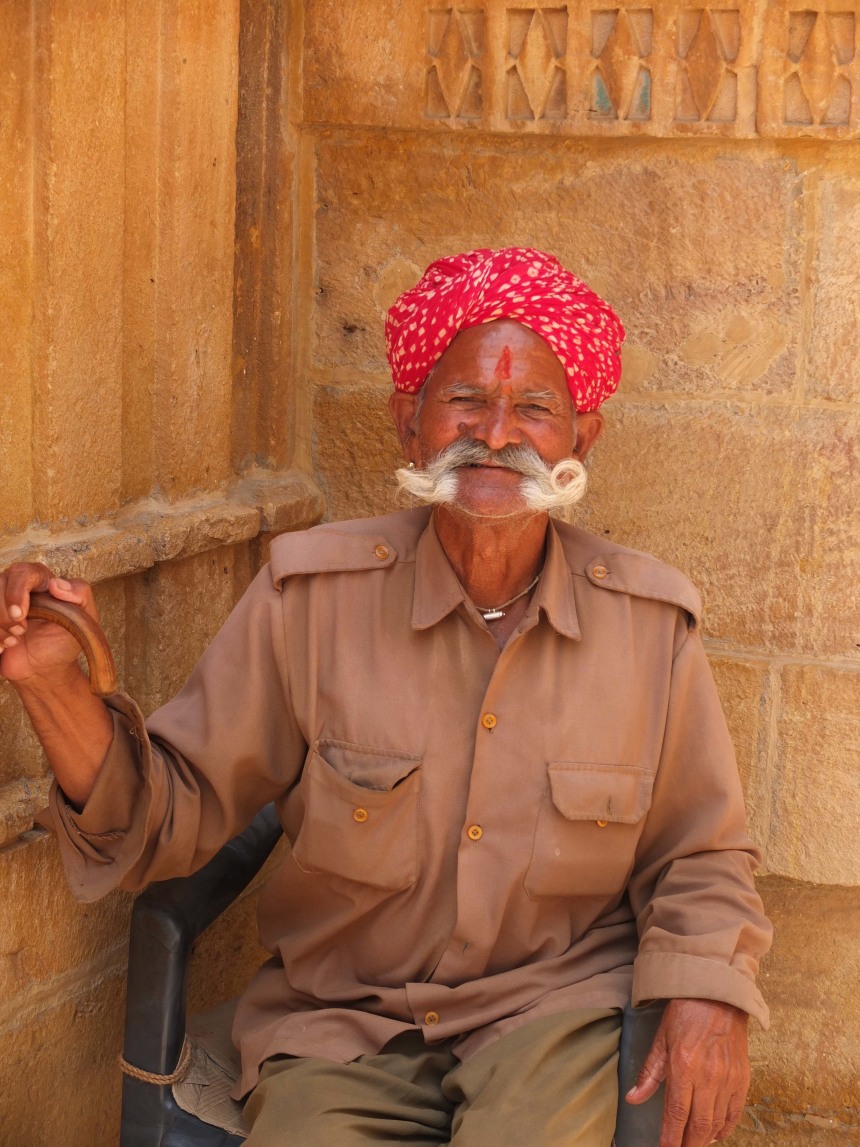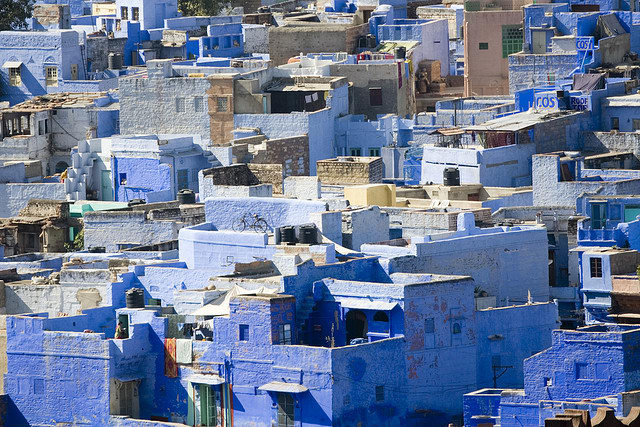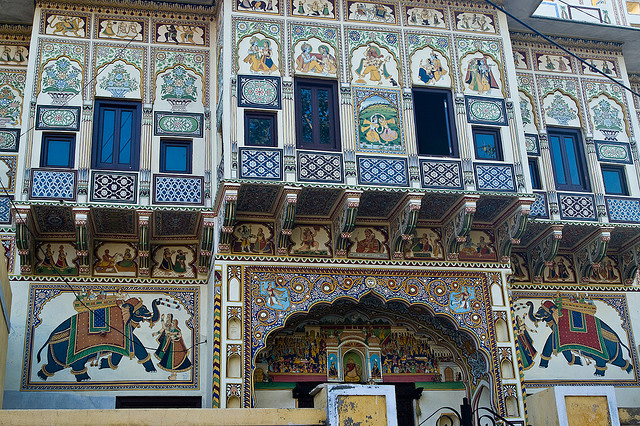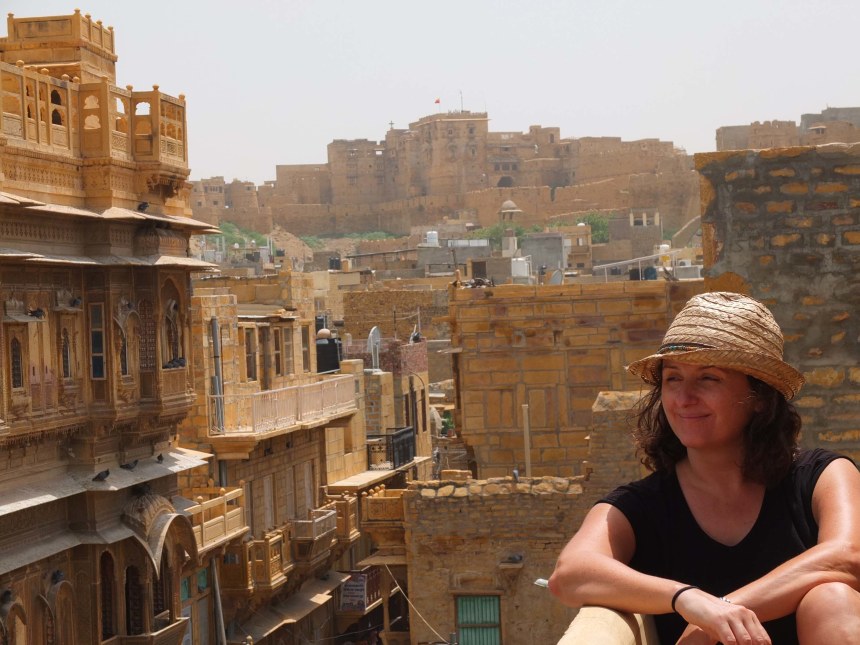| 7 mins read
Jennifer Mullen
If Rajasthan were a person, her amber eyes would peep out of her brightly coloured veil, still modestly keeping up her village traditions which make this part of India feel timeless. She would be surrounded by a flock of bleating goats, accompanied by the sound of animal bells, and the clunking of her heavy arm bangles, which extend way above her elbows. In the distance a magnificent fort would rise out of the arid heat of the desert, like a mirage. Unchanged, rich in colour, culture and history, it is not surprising that Rajasthan is one of the most popular destinations in India for travellers.
For anyone visiting India, Rajasthan personifies all the typical Indian stereotypes, such as snake charmers, elephants, ornate palaces and small bustling villages. On a practical note a Rajasthan tour guide will advise you that travel distances by road between main cities of Jaipur, Udaipur, Jaisalmer and Jodhpur are long (on average 6 to 8 hours), but the quality of the actual highways is really good and there is always something interesting happening out the window.
Jaipur - The Pink City
Most travellers start their Rajasthan sojourn in the capital city of Jaipur, otherwise known as the Pink City, which can be easily accessed by air from major hubs, such as Delhi or Mumbai. On arrival in Jaipur, one may be forgiven for thinking that one is not actually in India, given its meticulous and logical urban planning. It is only when you enter into the old town by one of the magnificent salmon coloured gates that you will start to see Jaipur’s rustic charm. Your Jaipur tour guide will list the City Palace complex, with its magnificent blend of Rajasthani and Mughal architecture as the main attraction of the city. Take time to also visit the Hawa Mahal and the Albert Hall, plus wander around the narrow streets of Bapu Bazaar to take in the busy life of a thriving Indian market, selling anything from silk sarees to products made of camel leather.
Without doubt the most breathtaking attraction in Jaipur is the Amber Fort, which is perched on top of a craggy walled skyline 11km outside of Jaipur. It has to be one of India’s most beautiful tourist attractions (which is no mean feat when you are competing with the likes of the Taj Mahal, the waterways of Kerala and a total of 32 UNESCO listed heritage sites!). At certain times of the day it is even possible to get taken up to the fort by elephant.
Directly opposite the fort on the other side of the valley is a steep stairway, which leads up to some exquisitely renovated fortifications. This staircase is practically unused by tourists, yet it provides unparalleled views of the Amber Fort and the surrounding countryside.
Udaipur - The Lake City
Udaipur is without doubt the city in Rajasthan that has it all. Not only does Udaipur have an abundance of history and elegance to keep any traveller enthralled for days, but also it is also very clean, wealthy and organised by Indian standards. For example the lakes are all interconnected and when one lake becomes full they use a lock system to drain water into another. Some of the top Udaipur highlights includes the City Palace (which still houses the current royal family of the area), the Bagore ki Haveli, the lush Saheliyon Ki Bari gardens, the Jagdish Temple, the Pratap Smarak memorial, and the cultural institution Bhartiya Lok Kala Mandal. Without doubt though, the highlight is taking a sunset boat trip over Lake Pichola, where you can watch the sky turn a shade of fuschia from the Jag Mandir Palace, which is located right in the middle of the lake. If it all looks a bit familiar, James Bond fans will be delighted to recognise the Lake Palace (now a hotel), which featured in the movie Octopussy. True to its name, the opulence of the Lake Palace is a magnificent experience in itself, though only residents are allowed access to its gorgeous interiors. While in Udaipur, try to catch a performance of the Ghoomar, one of the most popular forms of folk dance of Rajasthan where women in veils and long skirts twirl graciously to folk music.
Jaisalmer - The Golden City
Venturing into the east of Rajasthan, the mighty yellow sandstone fort city of Jaisalmer rises up in the middle of the desert. Walking through the mighty gates for the fortress, it genuinely feels like you have stepped back in time, due to the fact that people still live and work within this impressive structure. Take time to wander through the small streets, which are a treasure trove of local handicrafts and artisans. Jaisalmer also has some of the finest ornate havelis (taken from the Persian language, meaning enclosed place or courtyard) in India, which gives an insight into how each Rajasthan kingdom tried to outdo its neighbour by the sheer opulence and decadence of the architecture.
Jaisalmer also has to be one of the best places in India to observe the local people; Rajasthani village women bedecked in the most incredible facial and upper body jewellery and the men making a formidable impression with their huge curled moustaches and turbans the colour of saffron, pomegranate and chillies. For the perfect sunset view of the desert, take a camel safari into the dunes and watch the sun disappear westwards towards Arabia.
Jodhpur - The Blue City
Jodhpur gets its name from the blue houses, which traditionally are associated with Brahmins (although some historians claim it was due to copper sulphate being added to whitewash in order to repel termites - a slightly less romantic image!). Just as you think you have already seen the best forts in India, the sheer scale of the towers and ramparts of the Mehrangarh Fort will fill your senses. To the sound of local musicians playing traditional folk instruments, take time to explore the colourful rooms containing solid silver chairs, which once were used for riding elephants, or halls containing beautifully engraved swords that symbolise Rajasthan’s pedigree as a land of fierce warriors. Ask your Jodhpur tour guide to drop you off around the central bazaar area at the Sadar Market to tuck into delicious piping hot samosas, a popular Indian snack made of pastry filled with potatoes that are richly flavoured with a sharp taste of dried mango powder and other spices. Finish it off with a glass of cooling lassi in the shadow of the Ghanta Ghar clock tower.
Ranthambhor
Nature lovers should make sure they take the detour to visit the Ranthambore National Park. One of India’s largest and finest wildlife parks, most notably so for spotting their majestic tigers (as well as leopards, hyenas, sloth bears and wild boar), this was the former hunting ground of the Maharajas of Jaipur. Slip into the royal way of life here, though thankfully the best shots you will get of the wildlife will be the ones with your camera!
Mandawa
North of Jaipur, and gaining increasing popularity on the tourist circuit, sits the town of Mandawa, which is often described as an “open art gallery”, due to its breathtaking havelis as well as forts. The colourful history of the region is magically captured in the bright frescos on large home walls, depicting anything from mythological animals to the influence of the British Raj on India.
A peek into the colours, sights and sounds of Rajasthan will leave you with a lasting impression; more so of its locals; brightly dressed, yet traditional, slightly shy, but uniformly very welcoming towards visitors. It will give you a taste of India, which will no doubt leave you hungry for more.
Image Details and Licenses: Imaged provided by author + https://flic.kr/p/8aEChT (Glenna Barlow, CC BY-NC-ND), https://flic.kr/p/tbKZg (Phil Robinson, CC BY-NC 2.0), https://flic.kr/p/6fpyNp (RayMorris1, CC BY-NC-ND), https://flic.kr/p/6MV1tA (Alexander Schimmeck, CC BY-NC-ND) https://flic.kr/p/5XHPB5 (nevil zaveri CC by 2.0)


